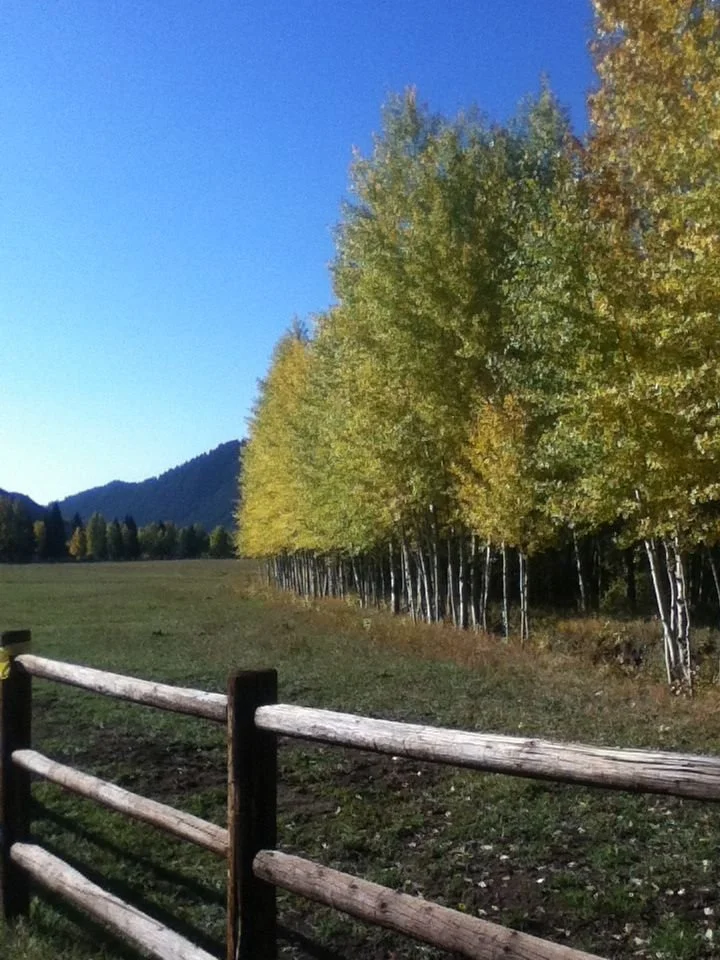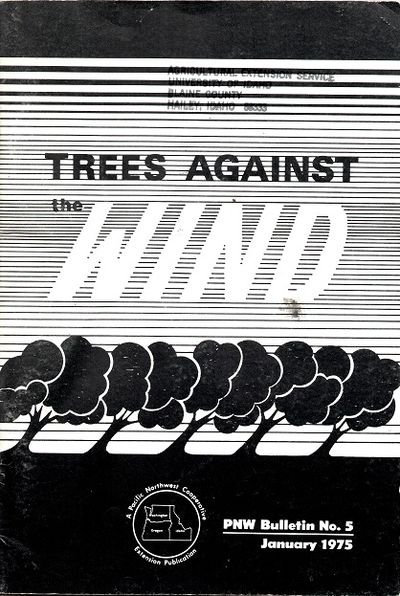Willows that I planted from trimmings last spring now stand high as a man and twice as wide. Their new growth turned reddish gold over the winter and now buds are forming. Given enough water, willows grow like weeds.
The aspen and lilacs and Nanking cherry seem to have taken root with few losses. I'd expected deer to take a measure of their tender shoots, but snow cover came early and heavy hereabouts and game animals have been scarce this year.
I fret over the Austrian pine and Douglas fir. No signs of sun scald, but it's too early for new growth and their progress is slow.
It is early spring and I am walking the windbreak I planted last spring. This stand of saplings should rise up 20 feet in a dozen years or so, providing some protection against the hot, dry westerlies that blow this way come summer.
A properly constructed windbreak can deter winds 10 times the height of the tallest tree, or so I've read. Planted in a bell-shaped curve with the tallest trees in the middle and shrubs on either end, the aerodynamic windbreak will re-direct breezes around a field, giving soils and tender seedlings some peace.
There's a rule of thumb that says a windbreak of medium density will reduce wind speed 50 percent or more on the ground behind it for a distance up to eight times the windbreak's height.
Those 30 mile-per-hour winds that whip through here would be flattened to 15 miles-per-hour for up to 160 feet behind a 20-foot windbreak.
A typical windbreak is made up of shrubs, quick-growing deciduous trees like poplars and willows, and some evergreens for winter protection. It will take 10 years or more to mature.
The Soil Conservation Service, under a federal mandate to encourage windbreaks, sells low-cost nursery stock each spring. Last year I bought a truckload and planted them, one by one, in a succession of rows. I laid out a drip-line along each row with individual drippers for each tree.
Throughout the summer I tried to keep the weeds and grasses down so the trees wouldn't have to compete for water, but did not always succeed. In some places I have to pull away the dried corpses brushy weeds to find my saplings.
But, as I said, my winter losses have been few. I can now envision a second year's growth and, faintly, imagine the windbreak of a decade from now.
Two-foot trees don't break much wind, but they do break ground on the future. And I realize, as I walk this line, that they are planted against more than just the wind, but against any force that would drive us from this land: bankruptcy, death, relocation, condemnation. A windbreak won't stop time, but it may slow it down.

